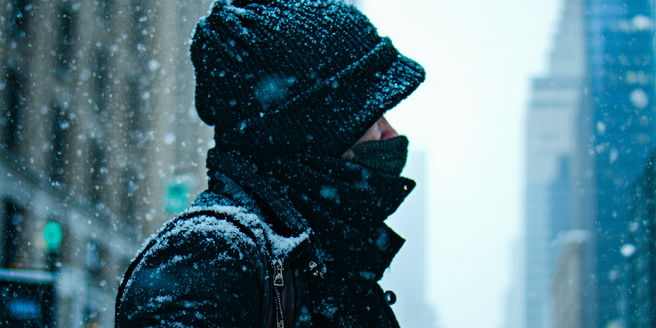
Understanding Wind Chill: What It Means and How It Works
Wind chill refers to the perceived decrease in air temperature felt by the body due to the flow of air. It can make temperatures feel significantly colder than the actual air temperature. Wind chill is calculated based on the rate of heat loss from exposed skin caused by wind and cold, meaning the stronger the wind and the lower the temperature, the higher the wind chill effect. Understanding wind chill is vital for gauging weather conditions and preparing adequately to safeguard against potential health risks, as the wind chill can lead to faster cooling and freezing of the skin.
How Wind Chill Affects the Human Body: A Look at the Science
When wind speeds increase, the body’s ability to retain heat decreases. Wind chill accelerates the negative impacts of cold temperatures on the human body by increasing heat loss from exposed skin. The enhanced cooling effects can lead to rapid heat loss, resulting in a drop in the body’s core temperature. It’s essential to wear appropriate clothing to protect against these conditions. Prolonged exposure can compromise the body’s ability to stay warm, raising the risk of hypothermia and frostbite. Understanding the science behind this effect is critical in mitigating potential health complications during cold and windy conditions.
Common Health Risks Associated with Wind Chill
Exposure to low wind chill levels can lead to various health risks, primarily frostbite and hypothermia. Frostbite occurs when the skin and underlying tissues freeze, while hypothermia sets in with a dangerously low body temperature. Wind chill can drastically lower the perceived temperature, increasing the danger level. Both conditions can escalate quickly under high wind chill conditions, especially without proper clothing and protection. Additional risks include chilblains, which are painful inflammations of small blood vessels in the skin. Recognizing these risks and understanding the conditions that exacerbate them can help individuals take preventative action.
Identifying Symptoms of Cold-Related Illnesses
Recognizing the symptoms of cold-related illnesses is crucial for timely intervention. Frostbite symptoms include numbness, tingling, or a blue or pale appearance to the skin. Hypothermia manifests through shivering, confusion, slurred speech, and a slow pulse. Chilblains reveal themselves as itchiness or red patches on skin exposure to frigid temperatures. It is crucial to dress appropriately and stay dry to minimize risk. It is important to monitor symptoms closely, especially during prolonged exposure to cold environments. Early identification of these symptoms can prompt immediate treatment and prevent more severe complications. Awareness and educational efforts around these signs empower individuals to act quickly.
Preventative Measures Against Wind Chill Health Effects
To minimize health risks from wind chill, wearing layers of warm clothing is vital, including insulated gloves and hats. Windproof and water-resistant outer layers offer additional protection. It’s important to cover exposed skin to prevent frostbite in extreme conditions. Taking frequent breaks indoors and staying hydrated help maintain body warmth and circulation. Taking a hot beverage with you can also provide warmth and comfort in the cold. Additionally, being mindful of weather forecasts and wind chill advisories enables better preparation. By adopting these preventative measures, individuals can reduce the likelihood of cold-related health issues and continue to stay safe and healthy during winter months.
When to Seek Medical Attention for Cold Exposure
Recognizing when to seek medical help for cold exposure is essential in preventing serious health consequences. Early intervention can significantly improve outcomes and reduce complications. Medical attention is advised if symptoms of hypothermia, such as persistent shivering, confusion, or slurred speech, are observed. It is also important to stay informed about local weather conditions to avoid exposure whenever possible. Frostbite requires professional treatment, especially if numbness, color changes, or blisters develop. Returning indoors and warming the body is critical, but seeking medical evaluation ensures comprehensive care and prevents long-term damage. Knowledge of these threshold signs ensures timely and effective response to cold exposure incidents.
